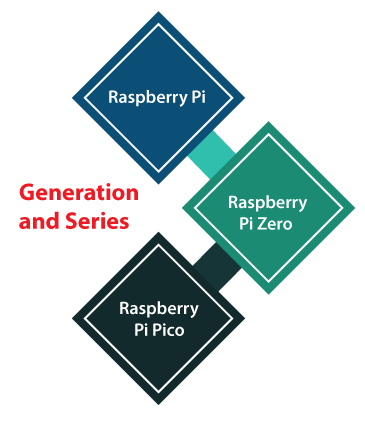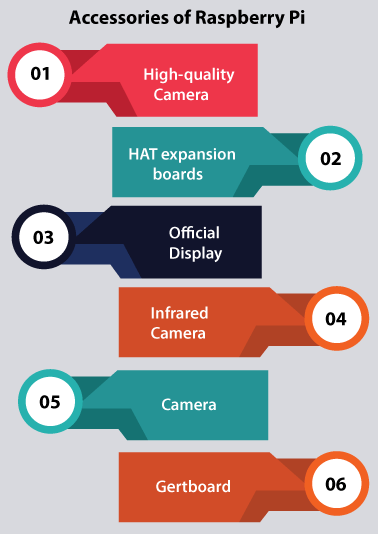Ubuntu Raspberry PiRaspberry Pi is a series of small SBCs (Single-Board computers) integrated in the United Kingdom via the Raspberry Pi Foundation in affiliation with Broadcom. Originally, the Raspberry Pi project leaned to teaching common computer science promotion in developing countries and schools. The actual model became more famous than anticipated, selling externally to its target market for many uses like robotics. It is used in several areas like weather monitoring due to its open design, modularity, and low cost. Typically, it is used by electronic and computer hobbyists because it adopted of USB and HDMI devices. After the publication of the second type of board, the Raspberry Pi Foundation build-up a fresh entity which is known as Raspberry Pi Trading, along with the liability of developing technology. This foundation was rededicated as an educational charity to promote the teaching of common computer science in developing countries and schools. The Raspberry Pi is one of the best-selling British Computer. More than 40 million boars are sold as of May 2021. Almost all PIs are developed in Sony factory in Wales, Pencoed, while others are developed in Japan and China. Generations and SeriesThere are three Raspberry Pi series and many generations of all have been published. SBCs of Raspberry Pi offers a Broadcom system on a chip (also known as SoC) along with a developed ARM-compatible on-chip graphics processing unit and CPU, while the Pico version of Raspberry Pi includes an RP2040 system over a chip along with a developed ARM-compatible CPU. 
Raspberry Pi
Raspberry Pi Zero
Raspberry Pi PicoIn January 2021, Raspberry Pi Pico was published for 4 dollars. It was the first board of Raspberry Pi based on a single RP2040 microcontroller chip, which was developed by Raspberry Pi in the United Kingdom. This version includes 264GB RAM and 2MB Flash Memory. It's programmable in RUST, C CircuitPython, and MicroPython. It has also partnered with SparkFun, Arduino, Pimoroni, Adafruit, and Vilros for building Accessories for Pico and a range of other boards with RP2040 Silicon Platform. Instead of playing the role of a basic purpose computer, it is developed for physical computing, same to the concept of an Arduino. HardwareThe hardware of Raspberry Pi has evolved from many versions that offer changes in the kind of the central processing unit, support of peripheral device, support of networking, and memory capacity amount. ProcessorA Broadcom BCM2835 SoC applied in the initial generation Raspberry Pi contains a 700 GHz processor, i.e., ARM1176JZF-S, RAM, and VideoCore IV Graphics Processing Unit. It includes level 1 of 16 KB cache and a label 2 of 128 KB cache. The cache of level 2 is primarily used by a GPU. The ARM1176JZF-S is a similar CPU used within the original iPhone, however at the higher clock rate and coordinated with a much faster GPU. RAMThe early structures of A and B boards Model of Raspberry Pi contained only 256 MB of RAM. By default, the early beta boards of Model B allocated 128 MB memory to the GPU of this, leaving only the 128 MB memory for CPU. Three distinct splits were feasible on the early releases of 256 MB A and B Models.
NetworkingThe Model Pi Zero, A+, and A do not contain Ethernet circuitry and they are commonly linked to a network with an independent user-supplied WiFi adapter and USB Ethernet. The Ethernet port is given by a USB Ethernet adaptor (built-in) with the SMSC LAN9514 chip on the B and B+ Models. The Raspberry Pi Zero W and 3 are equipped with a 2.4 GHz 802.11n WiFi and 4.1 Bluetooth based on a Broadcom chip, i.e., BCM43438 FullMAC along with no official monitor mode support and the Pi 3 version includes a 100/10 Mbit/s Ethernet port as well. Special-purpose AspectsThe Raspberry Pi 4, 3A+, 1A, and Zero could be used as a "USB gadget" or USB device, plugged into other computers by a USB port on other machines. It could be configured in more than one way. For instance, to display as an ethernet device or serial device. However, originally needing software patches, it was included in the distribution of mainline Raspberry in 2016 May. The models of Raspberry Pi with a new chipset can start through the mass storage of USB, like through a flash drive. Starting from the mass storage of USB is not present in the actual models of Raspberry Pi, Raspberry Pi Zero, Raspberry Pi 2 A, Raspberry Pi Pico, and Raspberry Pi 2 B models along with a lower release than the 1.2 version. PeripheralsOptionally, the Raspberry Pi might also be implemented with a generic USB computer mouse and keyboard, although often re-configured for operating as a headless computer. Also, it might be used with USB to MIDI converters, USB storage, and any other component/device virtually with the capabilities of USB, relying on the installed drivers of the devices within the underlying operating system. Other peripherals could be attached from several connectors and pins on the Raspberry Pi surface. VideoA video controller can produce standard modern resolutions of TV-like full HD and HD, lower or higher monitor resolutions, and older PAL or NTSC standard resolutions of CRT TV as well. It can support the below resolutions: 1920*1200 WUXGA; 1920*1080 1080p HDTV; 1680*1050 WXGA+; 1600*1200 UXGA; 1400*1050 SXGA+; 1366*768 WXGA; 1280*1024 SXGA; 1280*800 WXGA variant; 1280*768 WXGA variant; 1280*720 720p HDTV; 1024*768 XGA; 800*600 SVGA; 640*480 VGA; 640*350 EGA. Also, the Raspberry Pi can produce 480i and 576i composite video signals. Some supported TV signal standards are NTSC-J, NTSC, PAL-N, PAL-M, and PAL-B/G/H/I/D. Real-time ClockThe time blemishes to being fixed over a network with the NTP (Network Time Protocol) when booting. The time information source could be another system on a Local Network that does include a real-time clock, or to the NTP server over the Internet. The time might be manually set or configured for assuming that no time passed at the time of the shutdown if no network connection is present. The time is monotonic but might be considered before then the real-time in the latter case. For systems that need a real-time built-in clock, a number of low-cost and small add-on boards along with real-time clocks are present. Software of Raspberry PiOperating systemsThe foundation of Raspberry Pi facilitates Raspberry Pi OS (also known as Raspbian). It is a 32-bit Debian-based Linux distribution for install, as well as third-party Windows 10 IoT Core, Ubuntu, LibreELEC, RISC OS, and specialized distros for classroom management and Kodi media center. It promotes Scratch and Python as the primary programming languages along with the support for several other languages. Also, several other operating systems can execute on the Raspberry Pi. There are many ways of downloading more than one operating system on a single SD card. Another operating system (not BSD- nor Linux-based)
Another operating system (Linux-based)
Another operating system (BSD-based)
Accessories of Raspberry Pi
|
 For Videos Join Our Youtube Channel: Join Now
For Videos Join Our Youtube Channel: Join Now
Feedback
- Send your Feedback to [email protected]
Help Others, Please Share










